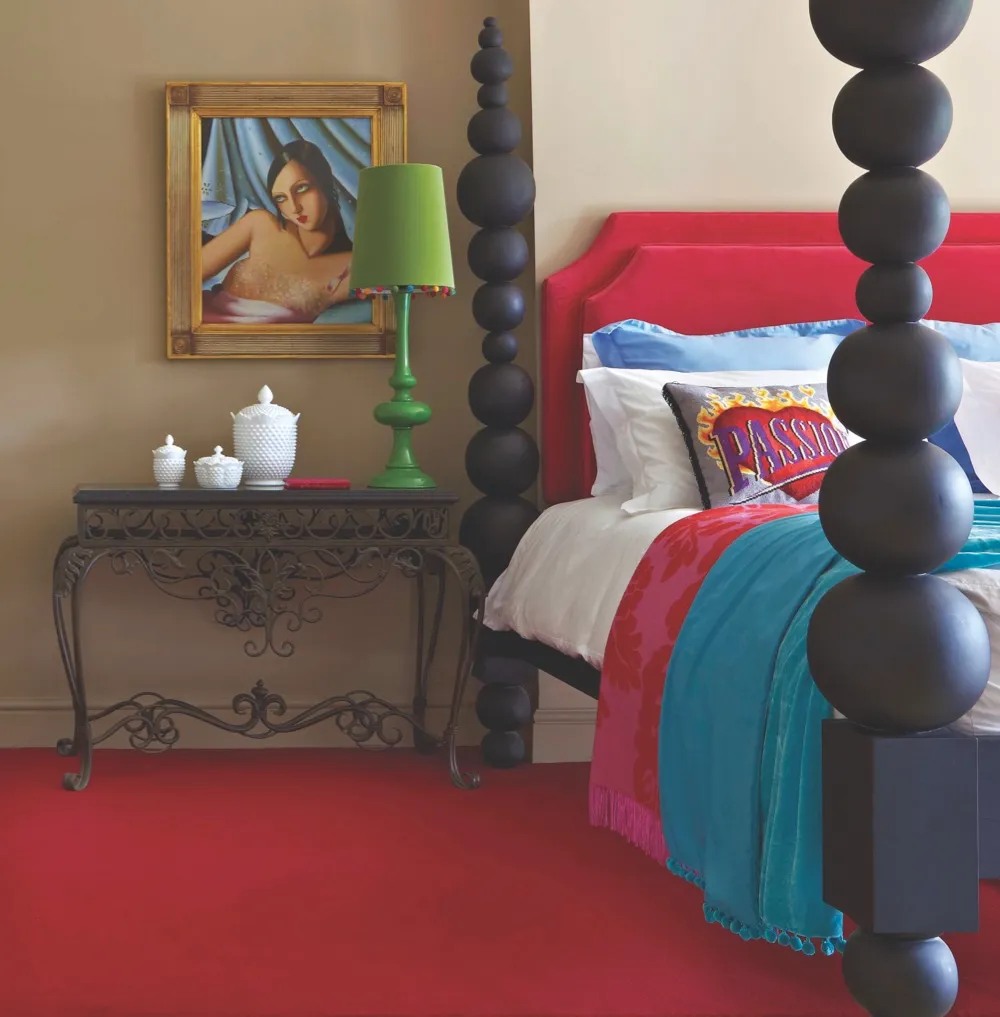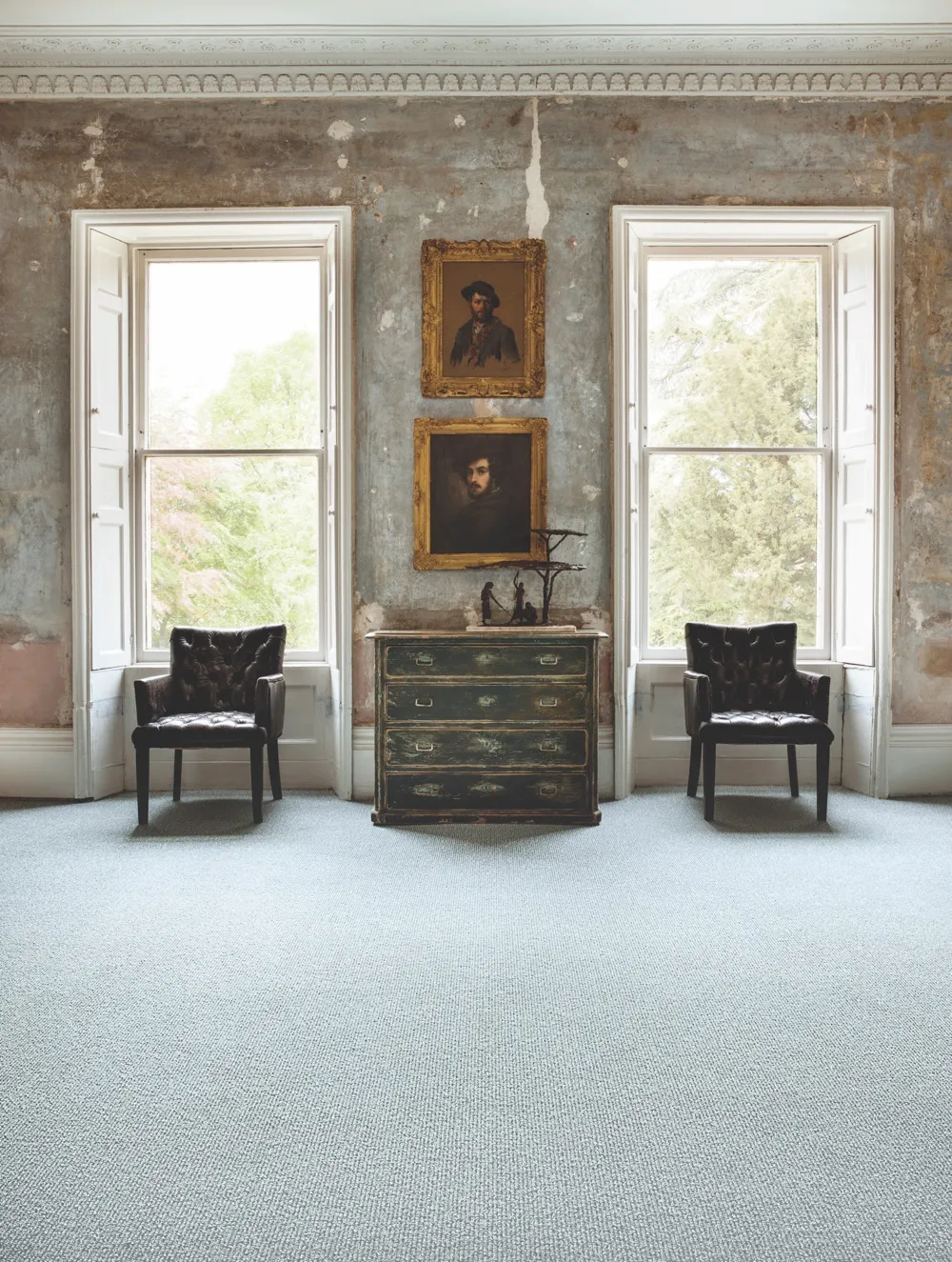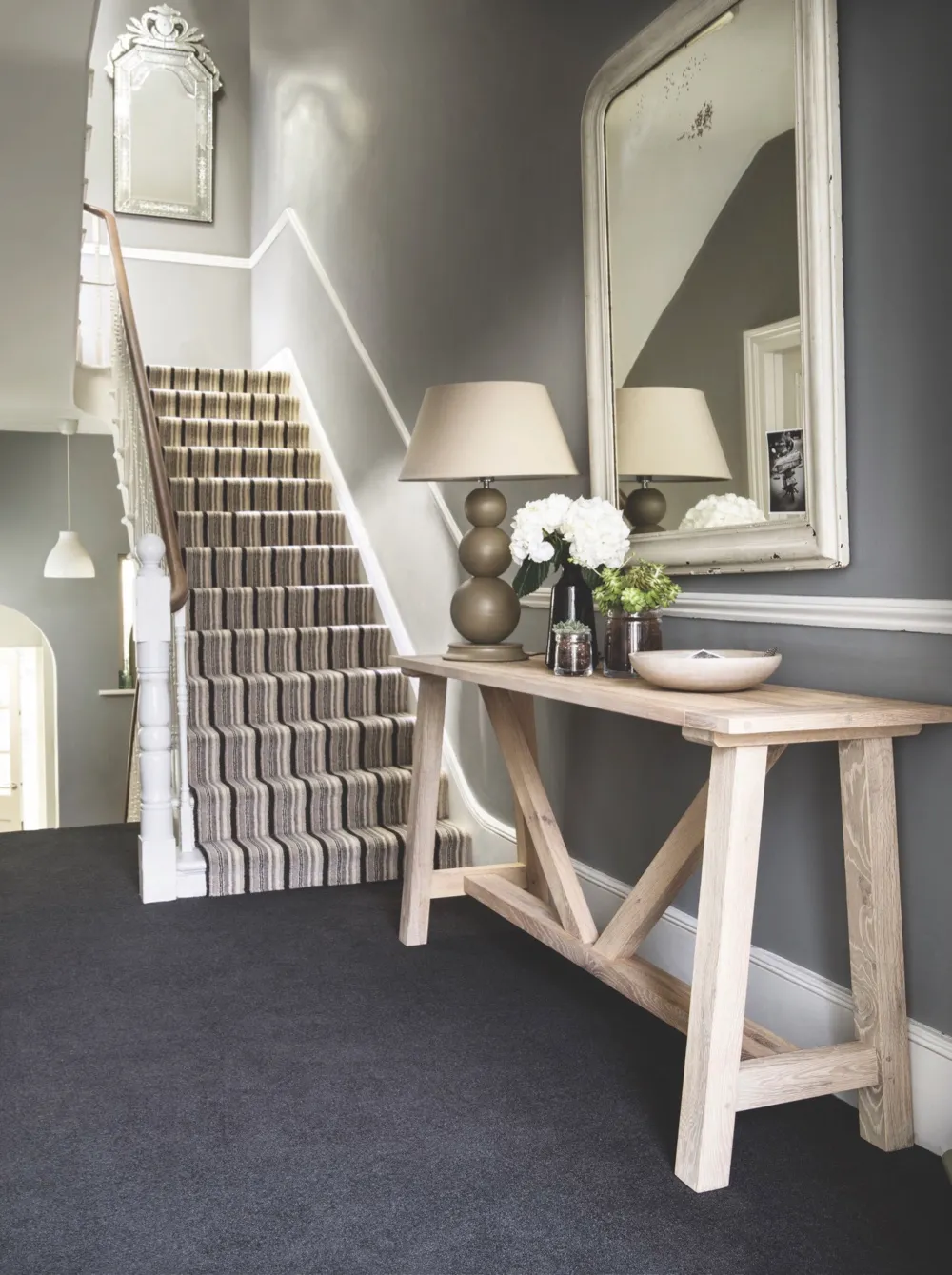It takes courage to step away from neutral flooring in favour of bright or deep-toned carpets, but confidence can pay off. In hallways and on staircases, positive colours give personality to what is essentially a functional through-route. Dark-hued flooring is a daring but effective choice for smaller rooms such as studies and ‘snug’ sitting rooms, especially if the design incorporates a second colour as a sharp counterpoint to its depth. ‘Living rooms and bedrooms are great places to experiment with darker colours,’ says Jemma Dayman of Carpetright. ‘Choose a deep pile Saxony or textured carpet that really makes the shades pop.’
Bright rugs and carpets can bring a sense of warmth, luxury and a welcome splash of colour to your home. From ingenious weaves and patterns, to vibrant shades and textures, the tips in the above gallery will help you to introduce a playful tint underfoot this spring.
1
Soft option

Carpet is the first choice for rooms where texture and warmth are priorities. Use it in the hallway to give a welcoming sense of cosiness, on the stairs to muffle sound and in the sitting room to enhance the feeling of comfort. When choosing carpet, consider how much wear it will get: ‘The living room is often the hub of the house, so go for a durable 80 per cent wool, 20 per cent nylon carpet. Or, if you have a young family, stain-resistant polypropylene may be the answer,’ advises Rupert Anton of The Carpet Foundation. ‘Remember that short pile usually wears better than long pile.’
2
A splash of colour

Adding tonal accents is a tried and trusted way to invigorate a room and it is easy to do with soft furnishings and accessories. However, if you’re looking for more impact, consider introducing a carpet or rug. ‘Stair runners work well in older properties where you might want to see the detail of the woodwork,’ says interior designer Amelia Carter. ‘And practically, even if you have wooden floors elsewhere, you’ll need a stair runner to provide warmth and reduce noise, as well as add colour.’ When it is used strategically, in judicious amounts, colour brings an element of surprise and anticipation to interiors. A vibrant carpet used on a staircase leading up from the entrance hall looks enticing, while a bright rug glimpsed through an open door gives a tantalizing peek of an area yet to be discovered. Meanwhile a lively rug under a dining table frames the furniture positioned on it, inviting a closer look.
3
Pale and interesting

Tones of beige, taupe and sand have long been the most popular choices among carpet buyers. Valued for their elegance and versatility, light neutrals provide a luxurious look and a sympathetic backdrop for a range of furnishing styles and shades. However, change is afoot and, says David Cormack of Cormar Carpets, ‘shades of grey and dusty colours are becoming the latest in carpet chic with pastel tones such as delicate blush pink or subtle greens creating a simple, soothing mood.’ Just as sophisticated as natural tones, pale hues make an active contribution to the decorating scheme, subtly echoing or accenting other furnishing colours. To be sure that the carpet you’ve chosen is the right hue, view it at home in situ. Many dealers offer small carpet swatches or may even lend larger samples for this purpose, while some manufacturers offer a free online sampling service
4
Surface interest

Texture strongly influences the style of carpet you opt for and is determined primarily by pile. Twist, velvet and loop are the most popular; twist pile being particularly hardwearing with a slight texture and even surface. Velvet carpets have a straight, smooth pile that reveals light and dark shading, while loop pile is uncut and hardwearing with an informal look. The pile can be made from a range of fibres, from traditional wool to plant materials and various synthetic yarns. Because they reflect light differently, combinations of these can produce interesting design effects. In a plain carpet, the contrast between matt and lustrous fibres or areas of loop and cut pile can create discrete single-colour patterns. One of the newest developments in all-over textural interest is the introduction of metallics: ‘Threads of lustrous fabric woven through wool provide shimmering detail,’ says Emma Hopkins of Crucial Trading. ‘They add a subtle sheen to softer tones and truly pop with darker shades.’
5
Style statement

A showstopping carpet or rug is sure to grab attention, but there are other ways of creating a strong scheme around it. ‘It’s important to consider the overall look and decide how bold you want to go,’ says Lorna Haigh of Alternative Flooring. The obvious way is to tone it down with plainer fabrics and simple furniture. ‘However,’ adds Haigh, ‘it’s good to challenge convention and work in plenty of pattern, playing with scale. So maybe have a decorative carpet with a small motif alongside large-scale patterns for curtains and cushions. Or go for large-scale on the floor as the ultimate statement with smaller-scale designs on other textile furnishings.’ Adding contrasts is the key to creating an eye-catching scheme.
6
Partners in design

Patterned carpet conceals marks and wear, making it a practical choice for the busiest areas of your home. But it has much to offer in terms of design and decorating potential, too: ‘There’s a current resurgence in traditional designs such as tartan and plaid,’ says Natalie Littlehales of Brintons. ‘These classic carpets create the warm, cosy feeling that is essential for a homely and welcoming atmosphere, especially in downstairs rooms.’ Used alongside plain colours, stripes and designs of a different scale, patterned carpets can add pace and drama to a coordinated flooring scheme that extends throughout the house. ‘To mix and match carpets successfully in adjacent rooms, stick to a similar colour palette so there’s a smooth transition in flooring from one space to the next,’ Littlehales suggests.
7
Bold approach

This feature first appeared in the March 2017 issue of Homes & Antiques. Back issues are still available. To purchase a copy click here.